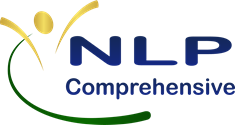You’ve done everything right.
The books are highlighted. The online modules are complete. You’ve swished and reframed and paced and led and patterned your inner world into a clean, optimized model of self-awareness.
So why, after all that, does your nervous system still go into lockdown when your sister questions your parenting?
Why does that project you swore you’d finish still sit untouched?
Why does that voice inside still whisper, “You’re not actually better yet”?
The truth is, NLP doesn’t stop working.
But something else quietly hijacks the system, and until you see it, you’ll keep wondering if you missed a module.
Let’s pull back the curtain.
The Real Reason You’re Still Triggered
Here’s what most NLP students never hear, at least not early enough:
There’s a difference between learning the tools and living the transformation.
Most people begin their NLP journey in “remedial mode.” That’s not a bad thing. In fact, it’s necessary.
You start with a problem: anxiety, stuckness, poor communication, chronic overfunctioning, something painful you’re ready to shift.
And so, you’re handed techniques that remediate the problem, like first aid for the unconscious mind.
This is powerful work. But it’s only phase one.
At some point, the goal is no longer just “to feel better.” It’s to become someone new.
To operate from a generative place, not patching problems, but choosing outcomes.
And that’s where NLP starts to falter for people who only ever used it like a psychological aspirin.
The Remedial vs. Generative Gap
Let’s name the gap.
In remedial NLP, you ask:
“How do I make the pain stop?”
In generative NLP, you ask:
“What kind of person am I becoming, and what kind of world do I want to help build?”
Those are wildly different questions.
The first one is pain-motivated. The second is vision-led.
And NLP has a framework for both, but if you’re still trying to create long-term change with short-term strategies, it’s going to feel like nothing’s working.
Here’s how this shows up:
- You keep reframing the same belief over and over again, wondering why it doesn’t stick.
- You anchor a calm state, but you still freeze when your boss questions you in public.
- You visualize your outcome perfectly, but feel no closer to action three weeks later.
- This isn’t failure. This is your system asking for something deeper.
The Ecology You Skipped
Remember ecology?
That quiet little concept tucked into the middle of your training, the one that asked, “Is this change sustainable, safe, and congruent with the rest of your system?”
Ecology is why the change didn’t hold.
Because if even one part of you thinks this shift is a threat, consciously or unconsciously, it will resist, override, or unravel the entire process.
And here’s what most people miss:
It’s not enough to want the change.
Your nervous system needs to feel that the change is safe, aligned, and allowed. Otherwise, the tools just bounce off the surface of your subconscious.
That’s when NLP “stops working”, but really, it’s working just fine.
It’s working to protect you.
Integration Isn’t a Checkbox, It’s a Lifestyle
One of the most dangerous beliefs in the personal development world is the idea that learning equals transformation.
You don’t integrate NLP by completing a checklist.
You integrate it by using it in the exact moments it feels easiest to forget.
You anchor resilience when things are calm, not when your kid is melting down and the oven’s on fire.
You reframe identity not in the seminar room, but when your inner critic shows up after a tough conversation.
You use perceptual positions not to “do a technique,” but to see more clearly in real-time, and choose how to respond.
Integration happens when NLP becomes how you think, not just something you learned.
That shift, from technique to operating system, is the real goal.
What to Do When NLP “Isn’t Working”
If you’re here, stuck in that in-between space between knowledge and transformation, there’s nothing wrong with you.
You don’t need another tool. You need to deepen your relationship with the tools you already have.
Here’s how to start:
- Ask ecological questions.
- “What part of me doesn’t want this change?”
- “What is this pattern protecting me from?”
- “If I got what I say I want… what might I lose?”
- Shift from remedial to generative.
- Don’t just fix the problem. Decide who you want to be instead.
- Ask, “What outcomes do I want to create, and what beliefs would support that?”
- Recommit to real integration.
- Pick one pattern you’ve learned and use it daily for 30 days. Not perfectly, just persistently.
- Practice under pressure. Let the messiness be part of the learning curve.
- Check your identity.
- Are you acting like a student or a practitioner?
- Are you using NLP as a coping mechanism or as a creative force?
Final Thought: You’re Not Broken. You’re Becoming.
If NLP feels like it stopped working for you, that’s not a flaw, it’s a signal.
It means your system is ready for deeper change. Not quick fixes, but core shifts. Not just relief, but real identity evolution.
And if that’s what you’re hungry for, it might be time to stop looking for the next “aha” and start living as the person those insights were always meant to shape you into.
This is where Hack Your Brain really begins.
Not with a new tool.
But with a new level of commitment to who you’re becoming.
Next Step: Let NLP Shape You, Not Just Help You Cope
If you’re ready to move beyond the basics and finally live what you’ve learned, the HYB Practitioner Course gives you the integration scaffolding you’ve been missing.
Ecology. Identity. Real-life practice.

